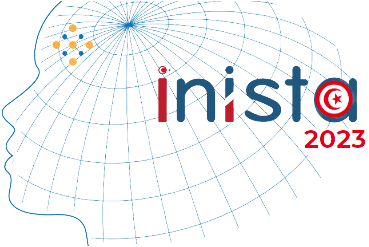
Dimitrios Tzovaras
Chairman of the Board of Directors of the Centre for Research and Technology Hellas – CERTH, Greece
Dr. Dimitrios Tzovaras is the Director of Central Directorate and Chairman of the Board of Directors of CERTH since December 2020. Prior to his current position and since October 2013 he was the Director of the Information Technologies Institute of CERTH (CERTH/ITI), while he remains the Head of the Virtual and Augmented Reality Laboratory of CERTH/ITI. He received the Diploma in Electrical Engineering (1992) and the Ph.D. in “2D and 3D Image Compression” (1997) from the Aristotle University of Thessaloniki and holds the position of Researcher A’ of CERTH since 2010.
For eight years (2010-2018) he was a Visiting Professor at Imperial College London (Faculty of Engineering, Department of Electrical and Electronic Engineering, Intelligent Systems & Networks group), while currently he is a Visiting Professor at the University of Nicosia (Institute For the Future – IFF).
His main research interests include network and visual analytics, computer vision, virtual and augmented reality, , multidimensional data analysis, machine learning and artificial intelligence. He is also deeply engaged in applied research aiming at providing innovative solutions in the fields of Energy, Medicine, Industry 4.0, Transport and Culture.
Dr. Tzovaras has conducted very important scientific and research work, which is summarized in 3 books, 55 book chapters, 245 publications in International Journals with Referees and 625 presentations in International Conferences with Referees. Dr. Tzovaras has acted as a reviewer of a large number of submitted scientific papers for a plethora of International Journals and Magazines, and International Scientific Conferences, and has
been Associate Editor of “EURASIP Journal of Applied Signal Processing (JASP)” and “Computer Journal” and Senior Associate Editor of IEEE’s international acknowledged scientific journals “Transactions on Image Processing” and “Signal Processing Letters”.
Since 1992, he has participated with his team in more than 280 Research and Development projects funded by the European Commission and the Greek Secretariat for Research and Innovation and has concluded industrial contracts with leading companies in the world, such as Samsung. He has an extensive management record having been the project coordinator and/or the technical/ scientific manager of 55 projects, during the last 5 years.
Since 2007 he is involved in various activities, management committees and councils relevant to the definition of R&D policy for both the European Commission and the National Agencies (elected member of the National Representatives of Greece in the European Commission for the FP7 Programme of International Cooperation, a member of Board of the National Documentation Centre (EKT) for a three-year term, since March 2014).
Dr Dimitrios Tzovaras is actively involved in innovation and entrepreneurship initiatives. He is the co-founder of nine (9) spin-offs of CERTH/ITI and the initiator of one of the most innovative activities in the area of electronically equipped infrastructures in Greece, the near zero Energy Smart House, an officially recognized Digital Innovation Hub of the EU. He is also the coordinator of Mega Project 3, Artificial Intelligence and Simulation Applications of the 4th Generation Technologic Park, ThessInTec in Northen Greece. He is the owner of seven patents in the scientific areas of virtual reality and health and biometrics, whereas he has applied for two new patents related to Information and Communication Technologies (ICT).
Abstract: AI for trustworthy Breaking News management
Breaking news refers to the information received regarding an event that has just occurred and/or is currently developing. In the era of the Internet of Everything facilitated by the beyond 5G technologies of superfast communication, breaking news are usually escorted by vast amounts of unfiltered, multi-modal information and are digitally broadcasted massively within short time periods. This raises a series of challenges that can be affecting crucial economic sectors, ranging from stock markets to financial products like insurances funds, as well as socio-ethical aspects, from politics to public opinion formulation.
From a more scientific perspective, it can be said that we are dealing with a severe big data challenge, where the unstructured information needs to be carefully collected & efficiently processed, in order to facilitate the utmost scope of trustworthy knowledge extraction. Within this respect, this session discusses a 3-pillar approach that looks prominent to support an AI-enabled pipeline towards the accurate, unbiased & democratic management of Breaking News.
The 1st pillar implements smart social sensing technologies in order to serve for the detection, identification & collection of the scattered emerging information. Specifically, it utilizes content-aware multi-modal parsers that are able to apply keyword-less NLP-based, topic detection on social media streams, digital news sites & further up-to-date open sources (e.g. Copernicus), that identify the spatio-temporal identity of emerging news, through a dedicated news aggregation engine.
The 2nd pillar regards the interpretation of the collected & non-documented information. Despite the fact that breaking news are, in their majority, expressed in written form, they often come along (or are correlated) with multimodal attachments (e.g., pictures, satellite images, videos, etc.). One the one hand, multimodal items allow for the transfer of dense information, but on the other hand they further increase the dimensionality of the data to be processed. Thus, in order to lay the focus on the useful information, multimodal AI technologies (e.g. key-frame-extraction, segmentation, detection, annotation, etc.) are applied, capable of extracting only the significant analytics that strengthen the validity and/or the content of the message communicated.
Finally, the 3rd pillar focuses on the credibility of the identified information, in order to enhance the trustworthiness of the framework. From one perspective, the complicated nature of news propagation can be modelled as a constantly evolving network, the participants (i.e. nodes) of which are simultaneously acting as news generators, (un-)intentional proxies and/or news recipients. This way, we can associate the network as a dynamic graph, where the credibility of the transferred packets (i.e. breaking news) is as good as the profile of the proxies they have passed so far. To this direction, a novel graph-based approach for online evaluation of the validity of emerging news will be explained.
